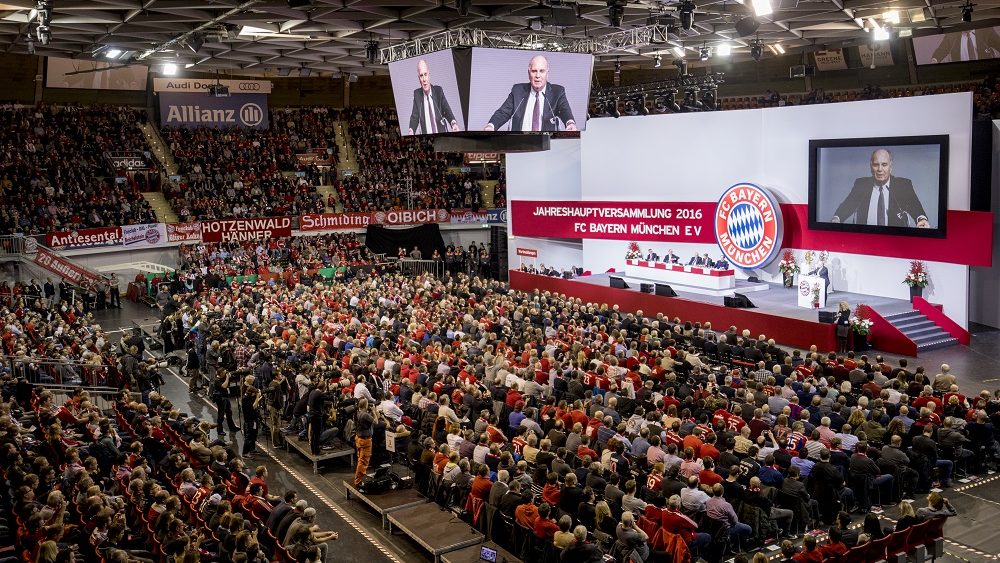Stats & Links: Commercial champions of Europe
FC Bayern has been a long-time member of the rich kids club, aka the Deloitte Money League, being among the five football teams with the highest turnover in the world over the last ten years. However, with an annual turnover growth rate of 6% for the top teams, the competition keeps pushing. Was Bayern able to keep up the pace this year?
Overall Results
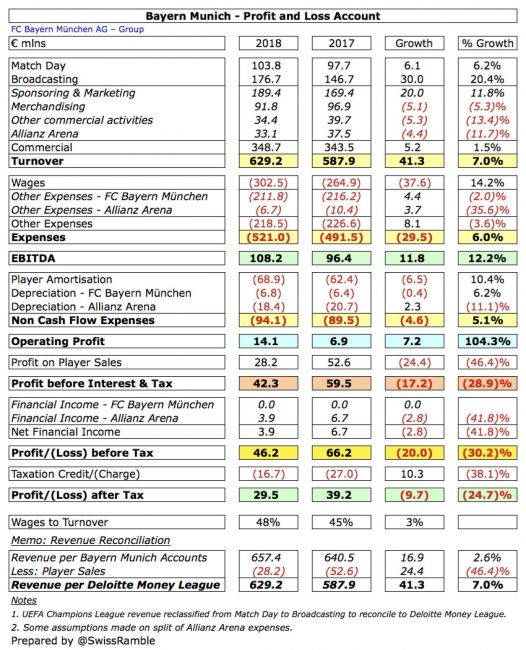
(Image: Swiss Ramble)
Even on a cursory inspection of these statements, it’s easy to see why the board is pleased with their results. Revenue increased overall by 7.0%, while expenses only increased by 6% leaving Earnings Before Income Taxes Depreciation and Amortization (EBITDA) at a 12.2% increase over 2017.
Furthermore, operating income rose 104.3% to €14.1 million from €6.9 million in 2017. The decline in Profit/Loss after tax, is almost completely due to the 46.4% decline in Profit on Player Sales. Given the tenuous nature of player sales, an increase in operating profit is a much better indicator of financial stability.
Comparison to the rest of Europe
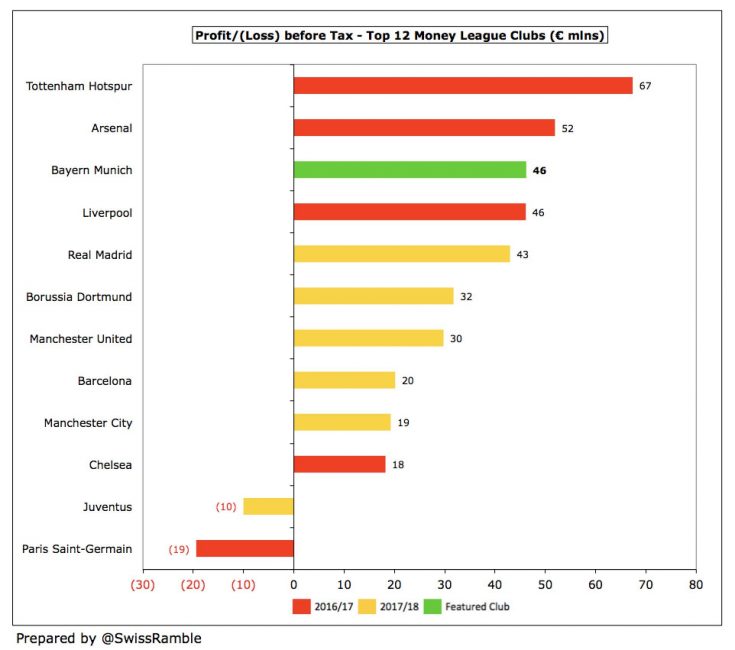
(Image: Swiss Ramble)
In this graph we can see that of all the clubs that have reported their 2018 numbers, Bayern are the most profitable and just behind Tottenham and Arsenal when looking at their 2017 numbers. Additionally, Bayern only benefited from €28 million in player sales which is second lowest of all clubs in 2018 and fourth lowest when including Paris and Arsenal’s prior year results.

(Image: Swiss Ramble)
Broadcasting income plays a large role in revenue streams for football clubs these days. Bayern’s income from these sources is significantly lower than the other major clubs in Europe, behind nearly the entire English Premier league, Real Madrid, Juventus, Barcelona, Athletico Madrid and even such teams as Napoli. Notably they are still above PSG, BVB, Inter and Schalke.
This makes their comparatively strong overall performance more impressive as they are forced to make up for this disadvantage by other means. The vast majority of that difference is made up in Commercial income, in which Bayern leads the rest of Europe coming in at €343 million.
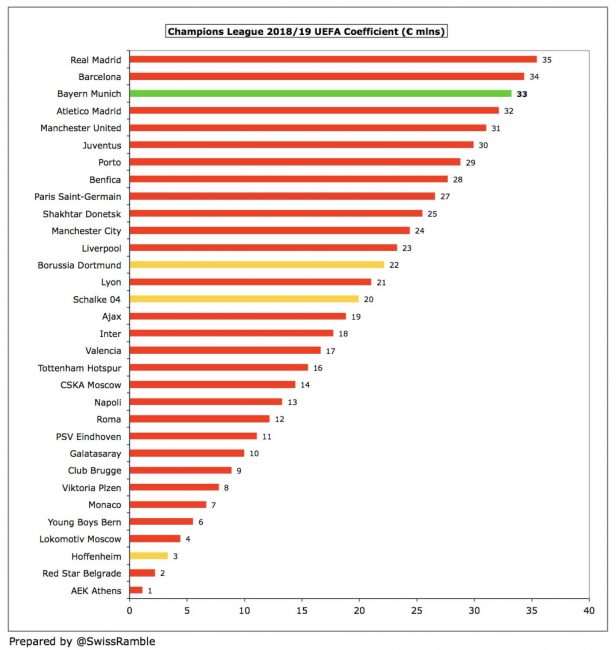
(Image: Swiss Ramble)
The new Champions League coefficient should help to marginally reduce the gap in television revenue over the coming seasons, though the Bundesliga deal, which is the lowest of the 5 big leagues in Europe, will continue to hinder Bayern’s growth in this area.
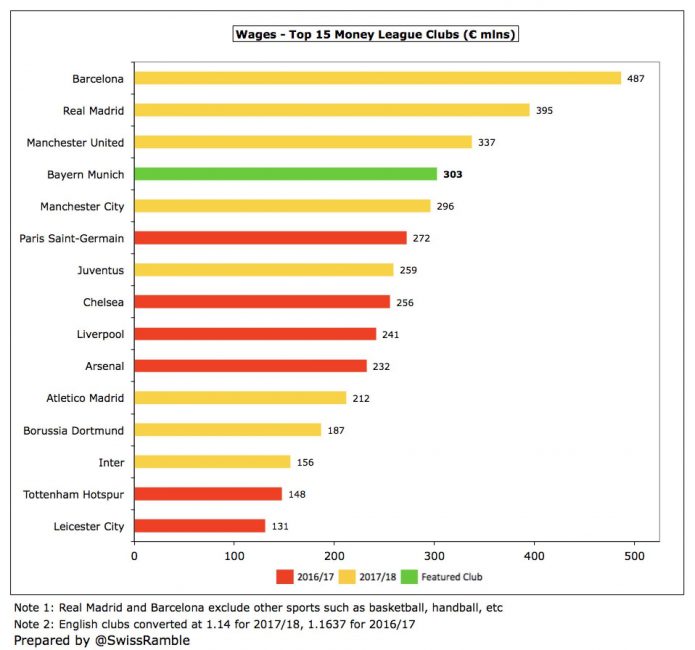
(Image: Swiss Ramble)
Bayern’s wage bill has also continued to rise coming in at 4th in all of Europe and €116 million more than Dortmund’s €187 million. Conversely, Bayern’s Wages to Turnover ratio was at 48% which is significantly better than Barcelona who were at 70%, the highest in Europe, and even BVB who came in at 59%. While wages have risen 14.2% since 2017, their proportion to revenue has risen a modest 3% year over year.
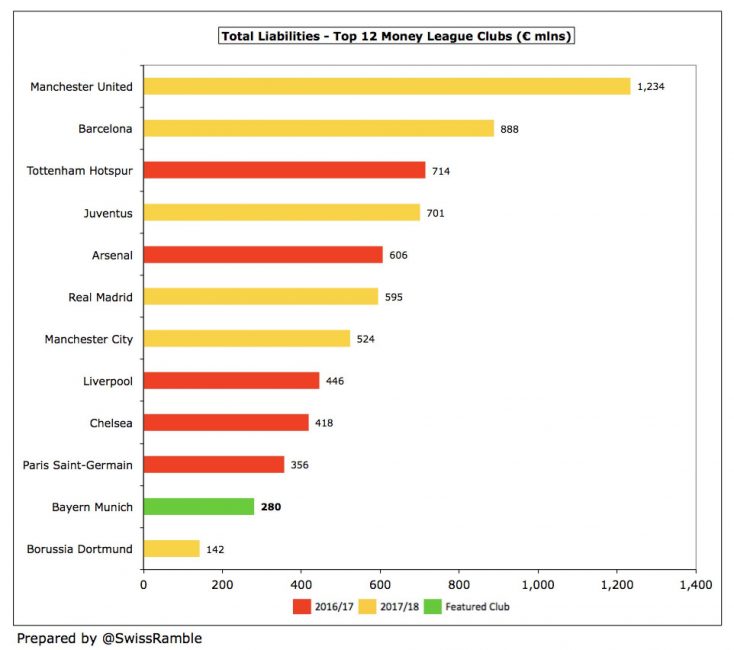
(Image: Swiss Ramble)
Bayern’s debt is the second lowest of the top clubs in Europe with only Dortmund coming in below them. Bayern’s cash balance of €200 million is €141 million higher than that of Borussia Dortmund and is the is the 2nd highest in Europe for clubs who have reported in 2018, or 4th when including 2017 numbers for clubs who haven’t.
Domestic Comparison
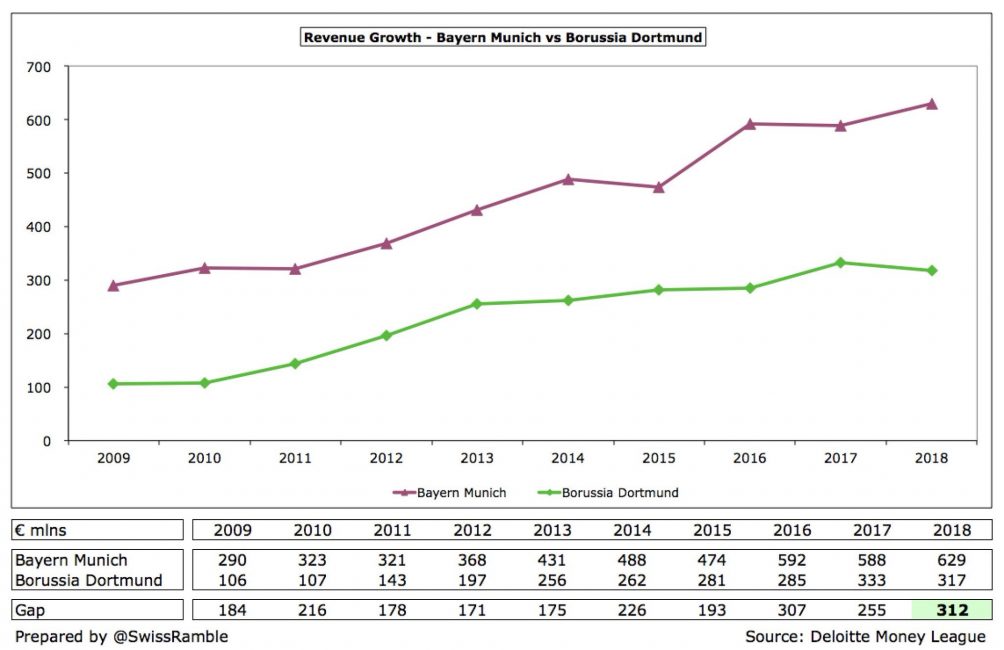
(Image: Swiss Ramble)
Domestically, Bayern’s 2018 revenue is nearly double that of Borussia Dortmund who is their closest competitor. For the last 10 seasons, Bayern have generated between 41% and 67% more revenue than Dortmund, with an average of 49% over that time.
As discussed earlier, Bayern’s revenue increased by 7% in 2018 compared to a 5% decline for BVB. Since the 2014 season Bayern’s revenue has increased by 22% compared to 17% for Dortmund. Over the last 10 years however, Borussia has increased their revenue by 67% compared to Munich’s 54%.
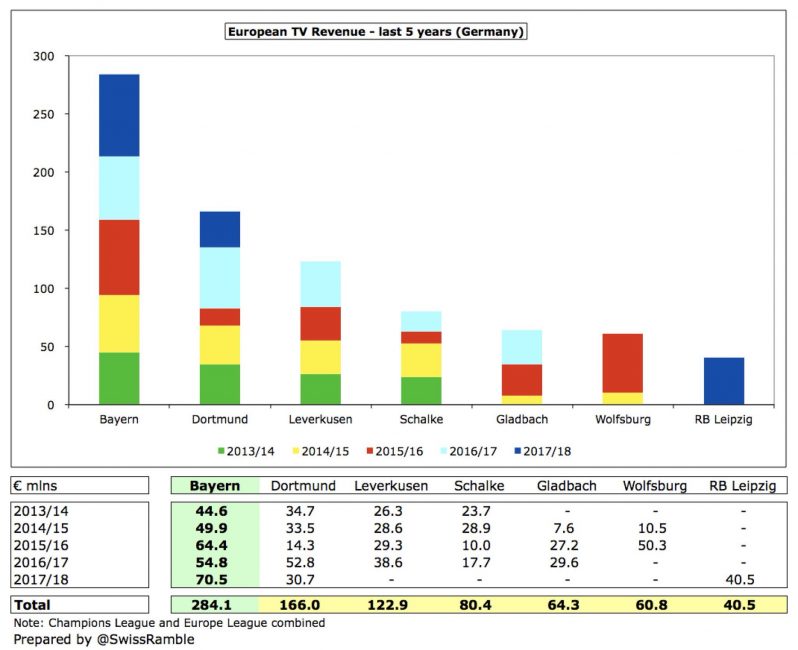
(Image: Swiss Ramble)
Bayern have also continued to outperform their rivals in terms of television revenue from European competition over the last five years coming in €118 million more than BVB. Match Day revenues came in at €104 million, up from 2017 when they were 5th in all of Europe at €98 million.
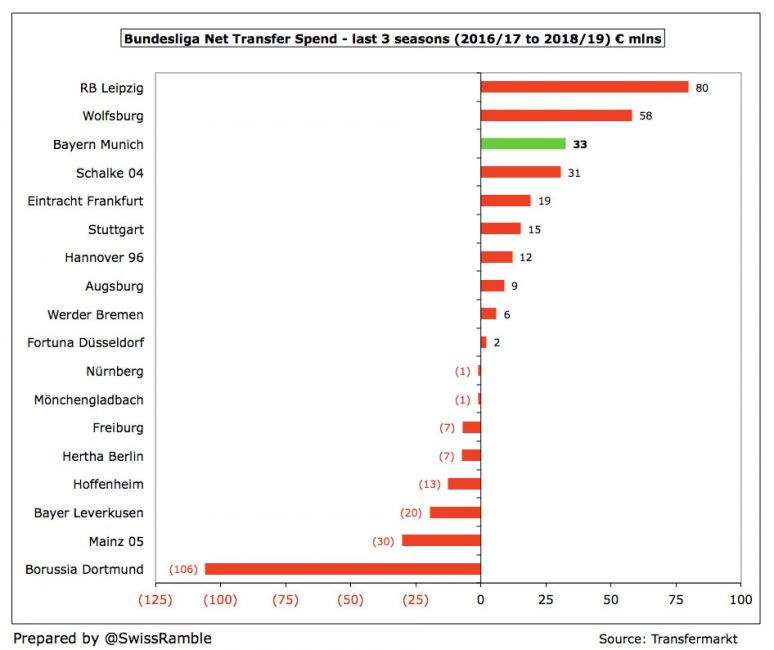
(Image: Swiss Ramble)
In contrast to popular opinion, Bayern’s net spend on players was not the highest in the Bundesliga with both Wolfsburg and Leipzig spending more, though it was still significantly higher than that of Borussia Dortmund who lead this category with a €106 million net profit on player activity. On a gross basis however, BVB outspent Bayern €306 million to €197 million.
Historical Results

(Image: Swiss Ramble)
While Profit/Loss declined in 2018, it was still the third most profitable year in their history and the decline was primarily due to the decrease in profit from player sales. Player sales have become an increasingly important line item for Bayern as their average annual profits have increased from €11 million between 2009 and 2013 to €41 million over the last 5 years. However, the significance of Player Sales in operations will lead to fluctuations in profit since player movement is unpredictable year over year.

(Image: Swiss Ramble)
Revenue streams have also continued to grow and diversify with the percentage of Commercial revenue declining to 55% of total revenue from 60% in 2014. Unsurprisingly, Sponsoring and Marketing as well as Broadcasting have seen the largest growth over the last 3 years.
Overall, Bayern’s financial performance both year over year and historically are very strong. Solidifying this view, Bayern compare favorably to the rest of Europe as well as their domestic competition. While things have not always gone smoothly on the pitch in the last few months, the board is certainly putting the club in a very good position financially.
Current Miasanrot-Articles
Battling Bavarians: Three Takeaways from FC Bayern v RB Leipzig | Rick
The Bavarians are back: Three takeaways from Hannover 96 v FC Bayern | Rick
Clumsy Munich Instead of Lucky Bayern | Maurice | Marc
Current Statistics and Visualizations
You are currently viewing a placeholder content from X. To access the actual content, click the button below. Please note that doing so will share data with third-party providers.



